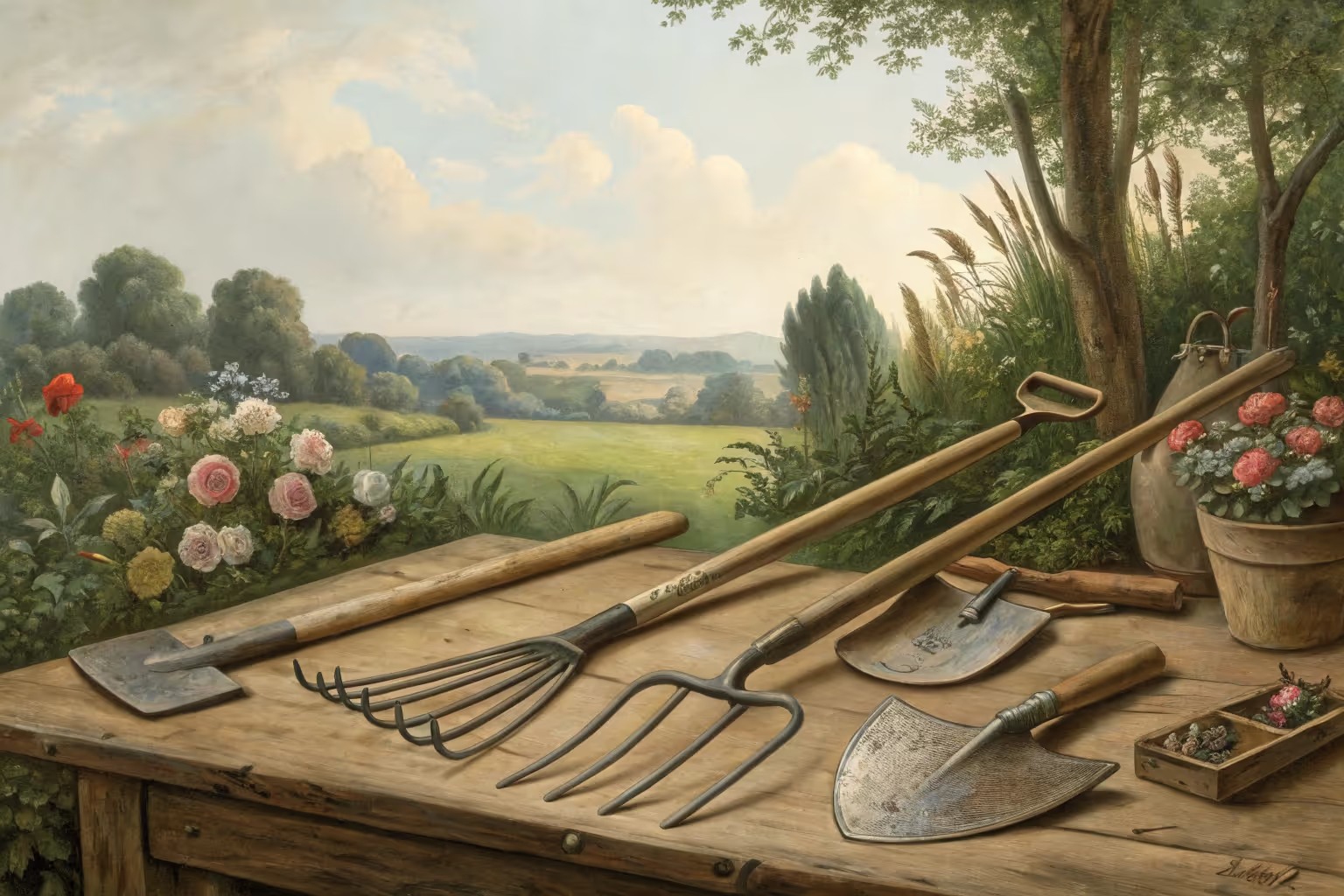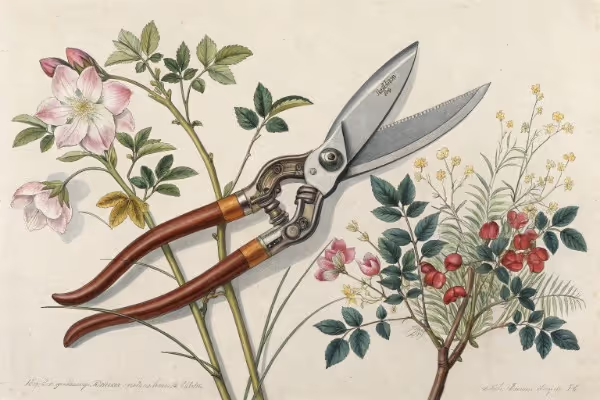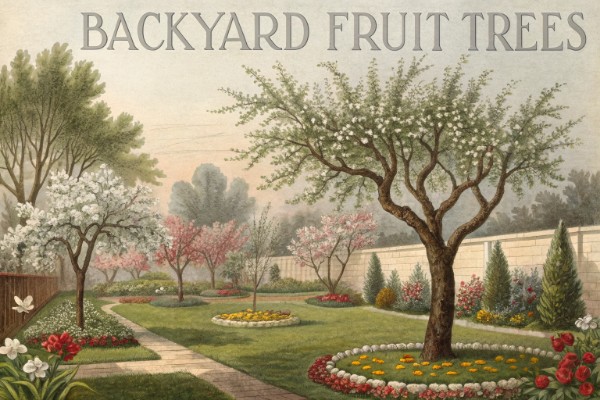Farmer Tools: Essential Equipment for Productive Fields

Farmer tools
Farmer tools shape every harvest, weed out wasted effort, and let growers work smarter with the soil. The right farmer tools—from broadforks to sharp hoes—speed up planting and keep crops thriving. Skip the guesswork: these essentials have earned their place in growers’ sheds for good reason.
If you want to trim hours from your chores and boost your yields, keep reading. Discover which tools seasoned farmers swear by, and learn how to make each one work for you.
Cheatsheet: Tools for Maximum Farm Yield
🛠️ Tools and Products You’ll Need
- Spade/Shovel: Soil prep, transplanting
- Hoe: Weed control, soil aeration
- Seed Drill: Row seeding, even depth
- Tractor: Plowing, tilling, hauling
- Wheelbarrow: Transport compost, plants, tools
- Irrigation kit: Drip, soaker, or sprinkler
- Pruners/Loppers: Trim, harvest, shape growth
- Gloves: Prevent blisters, exposure
- Soil Tester: pH, moisture, fertility
🌱 Field Preparation
- Test soil (pH 6.0–7.5, nutrients)
- Remove rocks, roots, debris
- Loosen soil (spade/tractor tiller to 8–12 in / 20–30 cm depth)
- Add compost or manure (2–3 in / 5–8 cm)
- Rake smooth for seedbed
🌾 Planting & Care
- Use seed drill for consistent sowing
- Water timely (irrigate before soil dries 1 in / 2.5 cm deep)
- Weed weekly with hoe
- Fertilize as required (soil test-guided)
🌻 Harvest & Maintenance
- Sharpen pruners/loppers before cutting
- Pick crops at ripeness for peak nutrition
- Compost plant waste to enrich soil next cycle
- Disinfect tools after each session
⚡ Fast Facts
- Efficient tools boost yield up to 30%
- Sharp blades cut labor time by 40%
- Consistent irrigation can double output
- Healthy soil = nutrient-rich food
- Strong tools limit injuries, increase efficiency
I judge Farmer tools by how much sweat they save per acre while keeping soil alive. A compact diesel tractor in the 25 to 40 hp range, about 18.6 to 30 kW, with a 540 PTO and Category 1 hitch, covers most mixed-veg plots without chewing fields.
Small acreage or tight beds shine with a two-wheel tractor. I’ve prepped 100 foot by 30 inch beds, about 30 m by 75 cm, faster with a two-wheel and a power harrow than a heavy four-wheel on wet spring silt loam.
A rototiller fluffs fast yet smears the subsoil and buries residue. I switched to a power harrow that stirs the top 1 to 2 inches, about 2.5 to 5 cm, and leaves layers intact, and my earthworms thanked me with better aggregation.
Hand scale bed flip still wins with a broadfork, a six-tine lever that lifts without inversion. Two passes in spring relieve compaction to roughly 10 inches, about 25 cm, without wrecking fungal networks.
A scuffle hoe slices thread-stage weeds with minimal disturbance. I carry a 3.25 inch, 8 cm, head for in-row lettuce and a 7 inch, 18 cm, for pathways.
Wheel hoes turn weeding into cardio with yield. Add a stirrup or torsion weeder for close work, and swap to hilling sweeps before corn hits 12 inches, 30 cm.
I run a tine weeder after transplanting brassicas once the roots anchor. It looks reckless and works like a charm if you move fast on a sunny, breezy afternoon.
For direct seed, a precision seeder like a Jang lays down consistent lines with proper singulation. I carry 3 rollers only: B for carrots, X for radish, and LJ for spinach, which covers 80 percent of my spring menu.
Transplanting speeds up with paperpot or a carousel transplanter on a tractor toolbar. Depth control beats speed, since shallow-set onions sulk for weeks, and deep-set tomatoes pout until soil hits 60 F, 15.5 C.
A simple EC and pH pen in the wash-pack saved me from salt burn and calcium lockout more than once. I mix liquid feeds with a venturi injector for drip, and I label stock tanks by N-P-K for no guessing on frantic mornings.
On spreaders, a drop spreader beats a broadcast for bed-width accuracy. Calibrate by weight per 100 square feet, about 9.3 square meters, and write the gate setting on the lid with a paint pen.
Drip tape with 8 to 12 inch, 20 to 30 cm, emitter spacing fits veg beds. I size pumps by total dynamic head and 1 gpm per 100 feet, about 0.23 L/s per 30 m, of tape under typical veggie pressure.
Quick-connects, pressure regulators, and a screen filter prevent 90 percent of headaches. I learned to flush laterals weekly and install ball valves on every bed header, so leaks do not ruin a day.
USDA NRCS reports efficient drip with proper scheduling can cut water use by 20 to 50 percent while maintaining yields. Source: USDA NRCS Irrigation Guide, 2019.
A flail mower mulches cover crops into a clean mat that feeds microbes. A sickle bar mower lays stems for quicker dry-down if you plan to crimp or roll rye and vetch.
My sequence for rye over winter: flail at boot, wait 10 days, then shallow harrow at 1 inch, 2.5 cm, to seed summer crops into a tidy mulch.
- Rear blade: crowns lanes and pulls washouts back after a gully washer.
- Box scraper with scarifiers: redistributes gravel and rips wheel ruts on clay.
- Subsoiler or single shank: breaks a plow pan at 12 to 18 inches, 30 to 45 cm, on dry soil for better shatter.
- Disc harrow: mixes residue lightly ahead of cover crop seeding.
- Power harrow: shallow prep that preserves tilth for fine seedbeds.
- Forklift or pallet forks: keeps backs intact on harvest days.
ROPS with a seat belt is my nonnegotiable on tractors, new or old. I learned on hills, and a low loader bucket with ballast in the rear box keeps the center of gravity friendly.
Tractor rollovers remain the leading cause of farm fatalities, and ROPS with seat belts are about 99 percent effective at preventing deaths. Source: NIOSH Agricultural Safety, 2020.
Hearing protection extends careers and good moods. I pair muffs with -26 dB NRR plugs on mowing days and keep spares in the glove box.
Sharp harvest knives, vented lugs, and clean totes are cheap yield insurance. A wash table with EPDM mats, a hose nozzle that feels nice at 40 to 60 psi, 275 to 415 kPa, and dedicated brushes move greens fast without bruises.
Cold storage pays back faster than any gadget on the farm. I run a CoolBot-style room at 34 F, 1 C, for greens and another at 50 F, 10 C, for tomatoes and cukes.
Every 10 C rise roughly doubles produce respiration, which shortens shelf life. Source: UC Davis Postharvest Center, 2015.
Choose R1 ag tires for traction, R3 turf for lawns, and R4 industrial for loader work on mixed surfaces. I keep pressures low for field passes to spread load and high for loader jobs to prevent sidewall chew.
Axle loads and tire footprint matter more than total weight. Wet silt loams compact above roughly 5 to 7 psi, 34 to 48 kPa, so I skip field entry for a day rather than fight ruts for a season.
Battery string trimmers, chainsaws, and blowers changed my dawn workflow near houses and pollinator rows. For tractors, early electric compacts report 3 to 8 hours per charge depending on load, which fits harvest and light cultivation blocks.
I size chargers to overnight recovery and keep a kWh log just like a fuel notebook. Cold mornings slash runtime, so I park inside or prewarm packs to keep crews from waiting.
Tools need a home near the action. I paint tool silhouettes on plywood, and lost gear shows itself like a missing tooth.
Grease zerks weekly on high-cyclers, torque wheel lugs monthly, and use a torque stick for loader mounts. I track engine hours and change oil at 100 hours if dusty, 200 if clean, and send an oil sample at season’s end.
- Intensive beds under 2 acres, 0.8 ha: two-wheel tractor with power harrow, flail mower, Jang seeder, wheel hoe, flame weeder, and drip kit.
- Mixed veg 2 to 10 acres, 0.8 to 4 ha: 25 to 40 hp compact with loader, quick hitch, pallet forks, flail mower, power harrow, bed shaper, transplanter, plus all the hand kit above.
- Perennial blocks and orchards: narrow tractor, under 60 inches, 152 cm, with side-arm flail, undervine weeder, and sprayer with airblast control.
Used implements age well, and iron is iron if bearings spin quiet and frames are straight. Tractors are different, so I want dealer parts support, clean hydraulic fluid, ROPS, and proof the PTO engages under load without chatter.
I bring a hydraulic pressure gauge, check loader pivot slop with a pry bar, and look for heat stress around wiring. Warranty length means little without nearby service technicians that answer the phone in August.
- Quick hitch Cat 1 and skid-steer quick attach on the loader for fast swaps.
- Hydraulic top link for tilt control on blades and mowers.
- LED work lights for safe pre-dawn harvests and a strobe for road moves.
- Magnetic parts trays, threadlocker, cotter pins, and spare lynch pins in every tractor toolbox.
- Color-coded fuel cans and a diesel transfer pump with a proper filter to keep injectors happy.
Field capacity: acres per hour equals implement width, feet, times speed, mph, times 0.121. I add a 20 percent field efficiency fudge for turns, refills, and crew chat.
Fuel burn: compact diesels sip about 0.04 to 0.06 gallons per hp-hour, 0.24 to 0.36 L per kW-hour, under moderate load. I plan jobs to cluster PTO loads together and road miles together to cut waste.
- Wheel hoe: 200 to 400 USD, 190 to 380 EUR, plus heads at 50 to 100 USD each.
- Two-wheel tractor with power harrow: 6,500 to 9,500 USD, 6,100 to 9,000 EUR.
- 25 to 40 hp compact with loader: 24,000 to 36,000 USD new, 22,000 to 33,000 EUR, less if clean used with hours under 1,200.
- Flail mower 60 inches, 152 cm: 2,000 to 4,000 USD, 1,900 to 3,800 EUR.
- Walk-in cooler build 8 by 12 feet, 2.4 by 3.7 m: 3,000 to 6,500 USD using a controller and a window AC, depending on insulation and doors.
- Put irrigation valves waist-high at bed ends, not buried, so crew actually uses them.
- Mount a 12 V magnet bar on the front weight bracket to pick up nails before tires find them.
- Use a cheap label maker on hydraulic hoses and rear remotes to stop the guessing game at dusk.
- Sharpen hoes at 15 degrees, wipe with a light oil, and hang them off the floor to keep edges honest.
- Paint implement PTO shafts safety yellow every spring so guards stand out when cracked.
FAO mechanization briefs tie modest mechanization to higher labor productivity and better timing on weather windows, which rings true in my logbooks. Eliot Coleman’s line stuck with me: the right tool is the difference between drudgery and craft.
FAO notes appropriate-scale mechanization can double or quadruple labor productivity while preserving soil when paired with conservation practices. Source: FAO Mechanization Strategy, 2016.
Tractor or two-wheel for a market garden under 3 acres, 1.2 ha. I pick two-wheel if paths are tight and soils are often wet, and a 30 hp compact if I move pallets, compost, and totes daily.
Rent or buy implements. I buy the three I use weekly and rent the rest during their peak month to keep cash free for cold storage and labor.
Rototiller or power harrow on silt loam. I run a harrow for 90 percent of bed flips and use a tiller only to incorporate stubborn sod or roots before a long cover crop.
UC Davis reminds us that heat kills shelf life fast. I stage harvest routes to hit the cooler every 30 minutes on hot days above 85 F, 29 C, and I keep totes in the shade between turns.
Up to 30 percent of produce value can be lost postharvest without prompt cooling and clean handling. Source: UC Davis Postharvest Technology Center, 2012.
- Late winter: service engines, sharpen everything, replace worn belts, inventory drip and fittings.
- Spring: power harrow shallow, seed covers behind storms, test EC in fert tanks, set bed markers to standard spacings in inches and centimeters.
- Summer: flail mow edges weekly, tine weed aggressively, flush filters, and ice down wash water to 34 to 36 F, 1 to 2 C, for greens.
- Fall: mow and seed covers early, subsoil only when soil is dry, deep-clean coolers, and fog sanitize totes.
- Winter: oil wooden handles, repaint tool heads, back up field logs, and ditch any tool that never earned a spot on the wall.
Tools carry culture as much as steel. On hard days I hear my mentor say, move like water and let the right tool do the heavy thinking, and the field answers back with less noise and better crops.

Want smarter plant choices? 🪴
Frequently Asked Questions
How do I determine which hand tools suit my daily garden tasks?
Match tool selection to soil type, crop choice, and task frequency. For example, lighter soils respond well to traditional hoes and tined cultivators, while heavy clay often requires pointed spades and durable forks. Narrow your set to well-balanced, ergonomic designs if you spend several hours digging, weeding, or pruning each day.
What maintenance steps extend the life of digging and cutting tools?
After each use, scrub off dirt and sap with a stiff brush. Dry tools thoroughly before storing. Sharpen blades and edges every few weeks using a whetstone or metal file. Apply a thin coat of oil to metal surfaces to prevent rust, especially before winter storage. Wooden handles benefit from periodic linseed oil treatments to resist splitting or warping.
Which materials offer the best durability for outdoor use?
Opt for hardened steel blades and tines, which hold their edge under heavy use. Stainless steel resists corrosion, especially in humid climates. For handles, ash and hickory provide strength and absorb shock. Look for forged or welded connections—these outlast stamped or riveted joints.
How do I safely use power equipment around growing crops?
Inspect areas for stones, wires, or hidden obstacles before operating.
Set the blade height or tiller depth carefully to avoid severing roots or damaging stems. Always wear protective eyewear, ear protection, and sturdy footwear. Shut off engines before clearing clogs or making adjustments. Only use electric tools in dry conditions, and avoid string trimmers near delicate stems to prevent bruising.
What storage solutions keep tools in top condition?
Hang spades, rakes, and hoes on racks to prevent dulling edges or rotting handles. Store power equipment in a ventilated, dry shed to prevent moisture damage. Use silica gel packs or a bucket of sand mixed with oil to keep hand tools rust-free. Keep sharpening implements nearby for quick maintenance after use.
How should I care for tools during winter months?
Thoroughly clean and dry all tools before long-term storage. Sharpen edges and coat blades in mineral oil or grease to prevent rust. Store wooden handles off the ground in a cool, dry space (above 32°F / 0°C), and cover tools with a breathable tarp to keep dust at bay.
Great fields start with farmer tools that work as hard as you do. A sturdy spade turns earth with authority. The right wheelbarrow hauls weight without complaint. Trusty pruning shears and a sharp garden knife keep growth in check. Simple tools, well-chosen, mean less wasted effort and more food on the table. Don’t forget the humble rake for tidying up or the hand trowel for those fine details. Each piece has its place; each job is easier with the right gear. Invest in quality, treat your tools with respect, and your fields will thank you. In the end, the best harvests start in the shed, not in the soil.
The Science Behind the Farmer’s Edge: How Tool Materials Shape Your Yield
Steel, wood, and polymers each dictate a tool’s longevity, sharpness, and resistance to fatigue. Crop yields rise by up to 12% when sharp, well-maintained implements are used, due to less root compaction and cleaner soil profiles (USDA research, 2022).
Sharp hoes, weeders, and seeders reduce labor-hour investments by 15% per acre (0.4 ha). The science is simple—efficient energy transfer and ergonomic dynamics let you cover more ground with less wear on joints and soil.
Material Matters: Know Your Metals and Handles
- High-carbon steel blades retain sharpness longest, crucial for slicing through sod and clay. Forged steel resists chipping at both freezing and hot (>100°F/38°C) field temperatures.
- Hardened stainless resists rust—ideal for wet regions but harder to sharpen.
- Ash and hickory handles absorb vibration, reducing hand strain. Composite handles last longer but transmit more shock.
Design Drives Productivity
- Ergonomic angles on hoes and shovels reduce wrist injuries by 25% in long-term studies (NIOSH, 2019).
- Blade geometry impacts soil turnover. Steep angles lift compacted soil better; broad curves suit sandy ground.
Sharpening: The Secret Variable
- Sharp tools cut effort by up to 30%, according to Iowa State University field trials. Maintain angles: 20° for knives, 30° for hoes.
- Frequent maintenance with whetstones extends tool life by 3–5 years, reducing costs and landfill waste.
Pathogen Prevention
- Sanitized blades stop cross-contamination; a 5% bleach solution kills common soil pathogens in 60 seconds.
- Disinfect before switching crops—vital for disease-sensitive species like tomatoes and brassicas.
Self-Sufficiency Bonus
- Durable, scientific choice of tools reduces replacement costs by up to 40% over 5 years. Less plastic, fewer disposables, more reliable harvests.
- Well-chosen materials and tool designs lower strain, improve morale, and help prevent repetitive stress injuries—keeping you in the field and your pantry full.
Find out which plants will thrive in your garden!
Answer a few fun questions and get custom plant recommendations perfect for your space. Let’s grow something amazing together!

start your season





.avif)